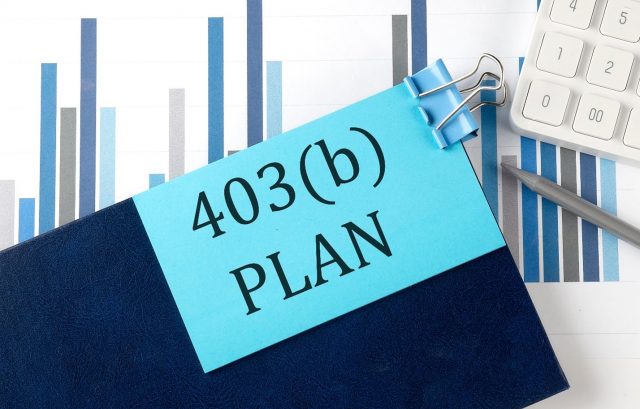Navigating the complexities of retirement savings can be daunting, but utilizing a 403(b) plan effectively can simplify this process and significantly enhance your financial security in retirement. As a cornerstone of many retirement planning strategies, the 403(b) offers numerous benefits, including tax advantages, employer matching programs, and the potential for compound growth. To fully leverage these benefits, it is essential to tailor your 403(b) contribution strategies to align with your age and career stage. Ed Orell of PRES Financial delves into detailed strategies for optimizing your 403(b) contributions throughout your working life.
What is a 403(b) Account?
A 403(b) account is a tax-advantaged retirement savings plan available primarily to employees of public schools, certain nonprofits, and religious groups. It allows for pre-tax contributions, which can lower your taxable income, and the investments grow tax-deferred until withdrawal, typically in retirement. Some plans also offer a Roth option, where withdrawals can be tax-free. Employers might contribute matching funds, enhancing your savings. Investment options usually include mutual funds and annuities. Withdrawals are taxed as ordinary income, and early withdrawals may incur a penalty unless exempted by specific conditions. Participants are required to start taking minimum distributions at age 72, unless still employed.
Early Career: Setting a Strong Foundation in Your 20s
The early years of your career present a unique opportunity to build a robust foundation for compound growth, allowing your investments more time to increase in value. Ed Orell explains how to make the most of your 403(b) during this stage:
- Start Immediately: Begin contributing as soon as you are eligible. Even small contributions can grow significantly due to compound interest.
- Capture Full Employer Match: Many employers offer to match contributions up to a certain percentage. Ensure you contribute enough to claim the full match, as this is essentially free money.
- Increase Contributions with Raises: Use salary increases as an opportunity to boost your 403(b) savings without impacting your disposable income. Consider setting up an automatic increase program if your employer offers one.
Growing Responsibilities and Assets in Your 30s
Your 30s are often marked by increasing responsibilities and income. Ed Orell emphasizes that it’s a crucial time to build on your early savings and refine your investment strategy.
- Reevaluate Your Savings Rate: As your income grows, aim to save at least 15% of it towards retirement, including any employer match. If you’re not yet at this level, plan incremental increases each year.
- Adjust Investment Strategy: With many years until retirement, consider maintaining a significant allocation towards equities, which historically offer higher returns over the long term. However, individual risk tolerance should always guide asset allocation.
- Plan for Competing Financial Goals: This may also be the time you’re considering buying a home or starting a family. Balance these goals with your retirement planning, ideally without tapping into your 403(b) funds.
Solidifying Savings in Your 40s
As you approach the midpoint of your career, it’s time to solidify your retirement planning. Ed Orell explains that this decade is often associated with peak earning years and, potentially, higher disposable income.
- Maximize Contributions: If you are financially able, start maxing out your 403(b) contributions. For 2022, the IRS allows contributions up to $20,500 annually, not including employer match.
- Portfolio Reassessment: Conduct a thorough review of your investment portfolio. Ensure your investment choices are aligned with your current risk tolerance and retirement goals.
- Catch-Up Contributions: If you are nearing 50 and feel behind in your retirement savings, plan to take advantage of catch-up contributions in the coming decade.
Pre-Retirement Planning in Your 50s
Your 50s are a critical period for retirement planning, with retirement likely less than two decades away. It’s time to maximize contributions and start focusing on transition strategies.
- Utilize Catch-Up Contributions: Individuals aged 50 and over can contribute an additional $6,500 to their 403(b) as of 2022. Take full advantage of this to boost your retirement savings.
- Reassess Investment Allocation: Consider gradually shifting towards more conservative investments to reduce exposure to market volatility as you near retirement.
- Develop a Withdrawal Strategy: Begin planning how you will withdraw from your accounts in retirement to optimize tax implications and income streams.
Transitioning to Retirement in Your 60s
In your 60s, retirement planning becomes more about transition and less about accumulation. Ed Orell emphasizes that it’s crucial to prepare for the shift from saving to spending.
- Refine Withdrawal Strategies: Understand the tax implications of your 403(b) withdrawals and strategize the most effective withdrawal sequence between your various retirement accounts.
- Social Security Strategy: Decide when to start receiving Social Security benefits. Delaying benefits until age 70 can result in higher monthly payments.
- Healthcare Planning: Ensure you have a solid plan for healthcare coverage. Familiarize yourself with Medicare options and consider supplemental insurance if necessary.
Effectively maximizing your 403(b) contributions requires a strategy that evolves with your financial and personal circumstances. Ed Orell of PRES Financial emphasizes that by starting early, adjusting your contributions and investment strategy over time, and planning for retirement transitions, you can build a substantial nest egg. Each stage of your career offers unique opportunities and challenges for growing your retirement savings, and addressing these proactively can secure your financial future and ensure a comfortable retirement.








